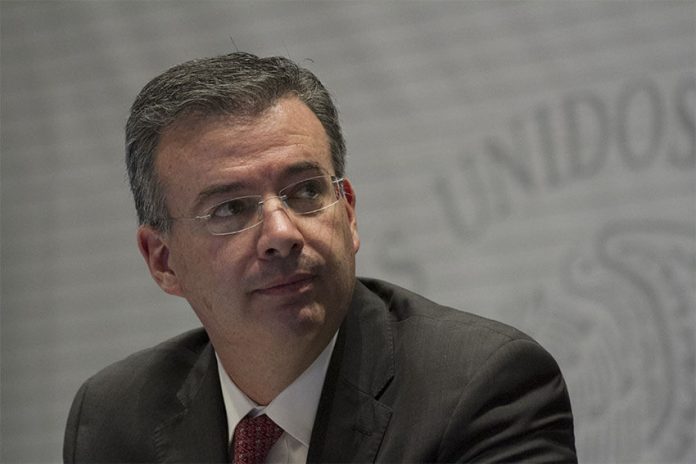The Bank of México has raised interest rates more than analysts had expected as it tries to smooth over a rocky leadership transition while the country faces its highest inflation in two decades.
The central bank raised its benchmark rate by 50 basis points on Thursday to 5.5%.
Four of five Bank of México (Banxico) board members voted for a 0.5% increase with only deputy governor Gerardo Esquivel in favor of a 0.25% rise. It was the fifth consecutive board meeting at which the benchmark interest rate was raised, but the first 0.5% spike since February 2017.
Banxico cited inflation concerns in a statement explaining its justification for the 0.5% increase, double what most analysts anticipated. Annual inflation hit 7.37% in November, its highest level in more than 20 years.
The central bank revised its end of year inflation forecast to 7.1%, a 0.3% increase compared to the prediction it published in November.
The bank simultaneously faces an internal challenge in smoothing over a turbulent transition to new leadership. In November, President López Obrador shook markets when he withdrew his nominee for central bank governor and replaced him with a little-known public sector economist.
Victoria Rodríguez Ceja has since been officially confirmed as Banxico’s next governor and will be the first woman to hold the role, although the opposition has questioned her monetary policy experience and her independence from the president.
Rodríguez, who is set to take over from current governor Alejandro Díaz de León on January 1, has vowed to fight inflation, not touch international reserves and maintain the bank’s autonomy.
Like many countries, Mexico is trying to tame soaring prices. From Brazil to Poland, central banks around the world are tightening monetary policy in an effort to contain inflation.
The U.S. Federal Reserve is also taking a more aggressive approach, and said on Wednesday that it expects to raise interest rates three times next year.
Alonso Cervera, chief Latin America economist for Credit Suisse, predicted that the Banxico board will continue to raise its benchmark interest rate next year, with accumulated hikes adding up to 1-1.25%. That would result in a rate of between 6.5% and 6.75% at the end of 2022.
The bank is also contending with a fragile recovery in Mexico’s economy, which saw a sudden contraction in the third quarter. More recent data suggests a rebound, but analysts have revised down their gross domestic product growth projections for 2021 to 5%, according to a monthly Banxico survey.
“Growth data has been disappointing, and the 4Q rebound does not seem to be strong,” analysts at Morgan Stanley wrote before the decision.
The peso strengthened on the announcement of the latest interest rate increase, rallying as much as 1.2% to 20.75 per US dollar, Reuters reported. One greenback was worth about 20.8 pesos shortly after 5:00 p.m.
Uncertainty over the central bank’s leadership has weighed on foreign investment. Foreign investors pulled nearly $1.3 billion from government securities in November, while foreign investments in equities also show outflows of nearly $4.8 billion to November, according to analysts at BBVA.
“We would expect foreign inflows to remain stagnated, as uncertainty regarding the current tightening cycle will continue due to the probable noise resulting from the new composition of Banxico’s board,” the analysts wrote before Thursday’s decision.
With reports from El Economista and the Financial Times
